
Croatia facts and history in brief
Split
Excerpted from Wikipedia, the free encyclopedia.
Split (Italian: Spalato) is the largest and
most important city in Dalmatia, the
administrative center of Croatia's
Split-Dalmatia county.
It is situated on a small peninsula on the
eastern shores of the Adriatic Sea, in the
foothills of Kozjak and Mosor mountains.
With a population of 188,694 (2001) it is the
second largest city in Croatia.
Absolute majority of its citizens
are Croats with 95.15% (2001 census).
History
Although the beginnings of Split are usually linked
to the building of Diocletian's Palace, there is
evidence that this area was inhabited
as a Greek colony even earlier.
Diocletian was a Roman emperor who ruled between
A.D. 284 and 305 and was known for his reforms and
persecution of Christians.
He ordered the work on the palace to begin in
293 in readiness for his
retirement from politics in 305.
The palace faces the sea on its south side
and its walls are 570 to 700 feet (170 to 200 m)
long and 50 to 70 feet (15 to 20 m) high, and it
encloses an area of 9½ acres (38,000 m²).
This massive structure was long deserted when
the first citizens of Split
settled inside its walls.
In 639, the interior was converted into a town
by the citizens of Salona who escaped the
destruction of their town by the Avars.
Over the centuries, the city has spread out
over the surrounding landscape, but even today
the palace constitutes the inner core of the
city, still inhabited, full of shops, markets,
squares, with even a Christian cathedral
(formerly Diocletian's mausoleum) inserted in
the corridors and floors of the former palace.
During its history, Split was ruled by Rome,
the Byzantine Empire, and intermittently by
Croatian and Hungarian nobility, until the
Venetian Republic took control in 1420 and
held it until its own downfall in 1797, when
it fell to Austria-Hungary with a brief
period of Napoleonic rule (1806-1813).
During this time, Split developed into an
important port city with trade routes to the
interior through the nearby Klis pass.
Culture flourished as well, Split being the
hometown of Marko Marulic, one of the classics
of Croatian literature, and a place where he
wrote Judita (1501, published in 1521), widely
held to be the first modern
work of literature in Croatian.
Split in the 20th century
After the end of World War I and the dissolution
of Austria-Hungary, the province of Dalmatia
along with Split became a part of The Kingdom
of Serbs, Croats and Slovenes (which in 1929
changed its name to Yugoslavia).
After both Rijeka and Zadar, the two other large
cities on the eastern Adriatic coast, went
to Italy, Split became the most important
port in Yugoslavia.
The Lika railway, connecting it to the rest
of the country, was completed in 1925.
In April 1941, following Axis invasion of
Yugoslavia, Split was occupied by Italy and
formally annexed one month later.
In September 1943, following capitulation of
Italy, city was liberated by Partisans only
to be occupied by Wehrmacht few weeks later.
During the occupation, some of the port
facilities as well as parts of the old city
were damaged by Allied bombing.
Partisans finally liberated the
city on October 26th 1944.
On February 12th 1945 Kriegsmarine conducted
a daring raid on Split harbour, using explosive
boats and damaging British
cruiser Delhi in the process.
Until the end of war Split was provisional
capital of Partisans-controlled Croatia.
After WWII, Split became a part of Croatia,
itself a constituent republic of
the socialist federal Yugoslavia.
It continued to grow and develop as an
important commercial and cultural center.
The city drew a large number of rural migrants who found
employment in the newly built factories, a part of a
large-scale industrialisation effort.
In the period between 1945 and 1990, the
population tripled and the city expanded,
taking up the whole peninsula.
When Croatia declared independence in 1991,
Split had large garrison of Yugoslav People's
Army, guarding the facilities and
headquarters of JRM - Yugoslav Navy.
This led to months of tense stand-off between
JNA and Croatian military and police forces,
occasionally interrupted by various incidents.
The most spectacular such incident occurred
in November 1991, when JRM, including
destroyer Split conducted
naval bombardment of the city.
This was the only time in history that the
military vessel bombarded a city
that it was named after.
JNA finally evacuated all of
its facilities in January 1992.
Split is now second largest city in Croatia.
Split is sometimes credited as Dalmatia's
capital, but there is no such
governmental unit as Dalmatia today.
Economy
The city is still feeling the effects of the
difficult transition to market economy,
worsened by the depression caused by
Croatia's war of independence.
In the Yugoslav era, it was an important
economic centre with a diverse industrial
base including shipbuilding, food, chemical,
plastics, clothing, paper industry etc.
Today most of the socialist factories are
closed down and the city has been
concentrating on commerce and services,
consequently leaving many
factory workers unemployed.
Despite everything, it has managed to
maintain its position as an important
transportation, commercial, and administrative
center of Dalmatia, ensuring stable,
though rather slow economic growth.
The prospects for the future look brighter.
The city is expected to benefit from the
completion of the first modern four-lane
highway connecting it with the capital
Zagreb and northern Croatia.
The entire route was opened in July 2005.
Today, city's economy relies mostly on trade
and tourism with some old industries undergoing
revival, such as food (fishing, olive,
wine production), paper,
concrete, and chemicals.
Transportation
Split is an important transportation
centre for Dalmatia and the wider region.
In addition to the Zagreb-Split highway
(A1), all the road traffic along the
Adriatic coast on the route Zadar-Dubrovnik
flows by the city.
The airport in Kastela is the third largest
in Croatia in terms of passenger numbers
(788,000 in 2004), with year-round services
to Zagreb and Frankfurt in Germany and
heavy tourist traffic in the summer.
Split passenger seaport is one of the
largest on the eastern Adriatic coast
with daily coastal routes to Rijeka,
Dubrovnik and Ancona in Italy.
During summer season Split is connected
with other Italian cities as well (like Pescara).
Most of the middle Dalmatian islands
are only reachable through the Split
harbour (usually with Jadrolinija ferries).
This includes both the closer islands of Brac,
Hvar and Solta, and the more
distant Vis, Korcula and Lastovo.

The above details were retrieved and condensed
from
(http://en.wikipedia.org/wiki/Split)
August 2005
All text is available under the terms of the
GNU Free Documentation License (see
Copyrights for details).

Hui Chin and I visited Croatia during our European
travels in 2005.
We have enjoyed our stay in the country, but were very
disappointed with the train services.
Before our departure from new Zealand, we purchased
a rather expensive Regional Eurail Pass with added days
to cover any delays or staying longer in any place than
we have planned for.
Croatia, - at least between places we intended to visit
- have very poor train services.
We arrived from Austria, through Slovenia to Rijeka,
and although Rijeka connected by rail to Pula, our next
stop, the train service is very slow and sporadic.
To go from Pula to Zadar or Split, or Dubrovnik, we
either had to go through Zagreb with the consequent
delay or use the bus services, which we did have to
use throughout.
The roads are very good, so are the bus services, but
it meant extra expenses for us, with already paid for
rail passes.
With the good roads Croatia is catering for the neighbouring
countries drivers, not for the like of us, with limited
budgets, who can't afford a car or hired car in every
country we like to visit.

Split looked like the filthiest
place on earth on our arrival at the waterfront bus
terminal, but it scrubbed up very nice, clean and tidy
very quickly.
Obviously the 'Splitians' must have had a 'one helluva
good' party the night before (Saturday).
Lots of Roman relics and ruins.
Friendly people.

You can click on these photos for an enlargement.
2005
 |
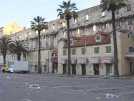 |
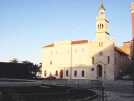 |
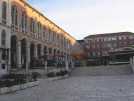 |
| Split |
Split |
Split |
Split |
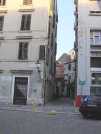 |
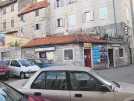 |
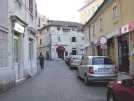 |
 |
| Split |
Split |
Split |
Split |
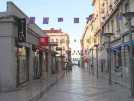 |
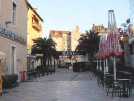 |
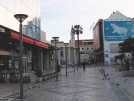 |
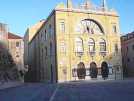 |
| Split |
Split |
Split |
Split |
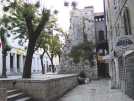 |
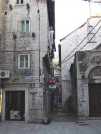 |
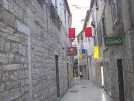 |
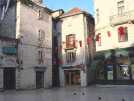 |
| Split |
Split |
Split |
Split |
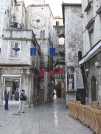 |
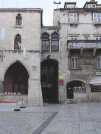 |
 |
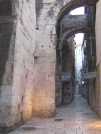 |
| Split |
Split |
Split |
Split |
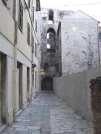 |
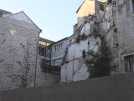 |
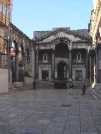 |
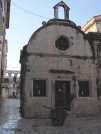 |
| Split |
Split |
Split |
Split |
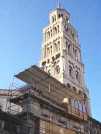 |
 |
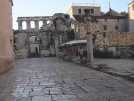 |
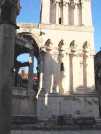 |
| Split |
Split |
Split |
Split |
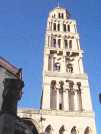 |
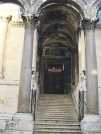 |
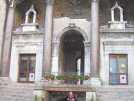 |
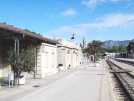 |
| Split |
Split |
Split |
Split |
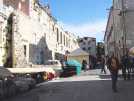 |
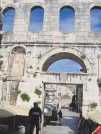 |
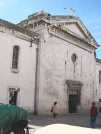 |
 |
| Split |
Split |
Split |
Split |

Site
Index
Back to Top
Photos Index
Thanks for coming, I hope you
have enjoyed it, will recommend
it to your friends, and will come
back later to see my site developing
and expanding.
I'm trying to make my pages
enjoyable and trouble free for everyone,
please let me know of any mistakes
or trouble with links, so I can
fix any problem as soon as possible.
These pages are best viewed with monitor
resolution set at 640x480 and kept simple
on purpose so everyone can enjoy them
across all media and platforms.
Thank you.
You can e-mail me at
Webmaster

|